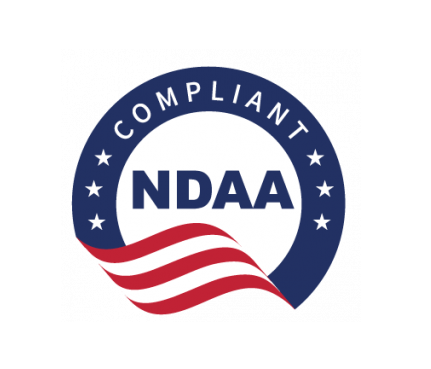Security Lock-In: Why Legacy Cameras and NVRs Keep Businesses Trapped in 2025
Most businesses don’t realize they’re “locked in” by legacy security systems. Outdated NVRs, static cameras, and proprietary VMS keep costs high, blind spots open, and criminals one step ahead. Here’s what that means—and how to escape.

Introduction
In 2024, the U.S. retail industry lost over $112 billion to shrink—a combination of theft, fraud, and inventory errors—according to the National Retail Federation (NRF). At the same time, law enforcement agencies reported $1.8 billion annually wasted on false alarms, most of which came from outdated security systems. Yet despite these alarming numbers, thousands of businesses—from shopping malls to schools—remain stuck with security tools designed for yesterday’s problems.
This is the reality of security lock-in. Much like the “mortgage lock-in effect” that froze the U.S. housing market in 2023 (when millions of homeowners refused to sell because of low locked-in rates), security lock-in traps businesses in outdated infrastructures. The result: higher costs, weaker protection, and criminals exploiting predictable blind spots.
Competitors like Verkada, Genetec, Milestone, and Eagle Eye Networks don’t just fail to solve the lock-in problem—they often deepen it with proprietary hardware, inflexible licensing, and contracts that discourage innovation. By contrast, ArcadianAI’s Ranger takes the opposite approach: camera-agnostic, cloud-native, and adaptive, it eliminates the lock-in that has kept organizations vulnerable for years.
Quick Summary / Key Takeaways
-
Security lock-in mirrors housing, energy, and cloud lock-in crises.
-
Legacy NVR/VMS systems keep businesses stuck in costly, static setups.
-
Competitors deepen lock-in through proprietary ecosystems and licensing.
-
Real-world incidents—from retail theft to school shootings—prove the risks.
-
ArcadianAI + Ranger breaks lock-in with camera-agnostic AI and cloud-native agility.
Background & Relevance
Lock-in is not unique to security. It’s a phenomenon across industries:
-
Housing Lock-In: The Federal Housing Finance Agency (FHFA) found 1.72 million fewer home sales occurred between 2022–2024 due to mortgage lock-in, driving up prices by 7% despite rate hikes.
-
Vendor Lock-In: In cloud computing, enterprises are locked into AWS, Azure, or Google Cloud due to data transfer costs and proprietary APIs. A 2025 Gartner survey found 72% of CIOs cite vendor lock-in as a top cloud risk.
-
Carbon Lock-In: Global economies remain tied to fossil fuels because of legacy infrastructure, delaying climate progress.
The common thread? Once entrenched, systems resist change—even when alternatives are cheaper, safer, or more effective. In the world of physical security, this dynamic is even more dangerous: criminals evolve faster than locked-in systems.
Core Topic Exploration
What Is Security Lock-In?
Security lock-in happens when businesses can’t upgrade their surveillance without prohibitive costs, disruption, or retraining. Common causes include:
-
Proprietary camera ecosystems (e.g., Verkada) that reject third-party hardware.
-
License-heavy VMS (e.g., Genetec, Milestone) that make scaling expensive.
-
Legacy NVR/DVR investments that feel “too expensive to replace.”
-
Staff retraining burdens when switching platforms.
In practice, this means many businesses still rely on 10-year-old analog-to-digital hybrids or first-generation IP cameras—systems criminals already know how to bypass.
Real-World Consequences of Security Lock-In
-
Retail Crime and ORC (Organized Retail Crime)
-
Target admitted in 2023 that theft had cost them $500 million in profit.
-
Home Depot reported booster crews using distraction tactics that legacy motion-triggered cameras failed to catch.
-
CVS stores in California lost entire aisles of cosmetics because static cameras provided footage only after the fact—no proactive alerting.
-
-
Accidents and Liability
-
In 2022, a warehouse in Illinois lost power during a fire. Its NVR failed, leaving investigators blind. The insurer cited “system obsolescence” in its claims report, reducing payout.
-
In 2024, a grocery chain in Texas faced lawsuits after an employee assault wasn’t captured because the DVR overwrote footage after 7 days—a default setting never updated.
-
-
Schools and Public Safety
-
The Uvalde school shooting (2022) revealed security systems with poor camera placement and delayed live feed access. Many districts since then remain stuck with outdated systems due to budget lock-in.
-
Universities with multi-campus setups often pay $100,000+ annually in license renewals to maintain VMS they can’t afford to replace.
-
How Competitors Create and Deepen Lock-In
-
Verkada: Requires proprietary cameras; no ONVIF support. Customers must rip-and-replace.
-
Genetec: Powerful, but license fees per camera and server requirements create long-term financial lock-in.
-
Milestone: Relies on channel partners; customers often locked into maintenance agreements with little flexibility.
-
Eagle Eye Networks: Marketed as “cloud-first,” but high per-camera storage fees penalize scale.
-
Axis & Hanwha: Camera vendors with strong hardware, but often tied to proprietary firmware updates that limit interoperability.
Lock-in is not just a byproduct—it’s a business model for many of these competitors.
The Economics of Staying Locked-In
-
Businesses spend $500–$1,200 per camera replacing proprietary hardware (IHS Markit, 2023).
-
Maintenance contracts add 15–25% annually to total cost of ownership.
-
False alarms cost U.S. police departments $1.8 billion annually (FBI, 2024), largely triggered by outdated motion-detection systems.
-
A 2023 NRF report found that retailers lose $700k per $1B in sales to shrink—losses amplified by outdated systems.
Why Static Systems Fail in 2025
Static NVR/VMS setups can’t adapt to:
-
AI-driven retail crime: Booster crews move faster than human monitoring can respond.
-
Extreme weather: Wildfires in California in 2024 obscured outdoor cameras, rendering them useless.
-
Cyber-physical threats: In 2023, hackers deployed ransomware to disable NVR systems in hospitals, delaying emergency responses.
Criminals exploit predictability. Locked-in systems provide exactly that.
Comparisons & Use Cases
Table: ArcadianAI vs. Locked-In Systems
| Feature | NVR/VMS Competitors (Verkada, Genetec, Milestone, Eagle Eye) | ArcadianAI + Ranger |
|---|---|---|
| Camera Compatibility | Proprietary or limited ONVIF | 100% camera-agnostic |
| Upgrade Cost | High (rip-and-replace hardware) | Zero (reuse existing) |
| AI Analytics | Basic motion/line crossing | Context-aware AI with Ranger |
| Mobility / Cloud | Static, server-bound | Cloud-native + scalable |
| ROI | Negative (licenses + contracts + hardware) | Positive (false alarm reduction, shrink control) |
Common Questions (FAQ)
Q: What does “security lock-in” mean?
It’s when a business can’t switch away from its cameras or VMS because of cost, contracts, or compatibility.
Q: Why is vendor lock-in dangerous in security?
It inflates costs, blocks upgrades, and leaves businesses exposed to crime.
Q: Can ArcadianAI integrate with my existing cameras?
Yes. Ranger is camera-agnostic—no forced replacements.
Q: How does lock-in impact ROI?
It raises TCO while losses from theft, liability, and false alarms continue to rise.
Conclusion & CTA
Lock-in has frozen homeowners, energy grids, and cloud customers. Now it’s freezing security—and criminals are the beneficiaries. Legacy systems keep businesses trapped, budgets drained, and safety compromised.
ArcadianAI’s Ranger breaks lock-in. By being camera-agnostic, cloud-native, and adaptive, it transforms existing hardware into smart, proactive protection. No more rip-and-replace. No more license traps. Just security that pays.
Security Glossary (2025 Edition)
-
Security Lock-In — When organizations are trapped using outdated surveillance due to cost or compatibility.
-
Vendor Lock-In — Dependence on a proprietary vendor, making switching costly or impossible.
-
NVR (Network Video Recorder) — On-premises device recording IP camera streams, prone to lock-in.
-
VMS (Video Management System) — Software controlling cameras and video; often proprietary.
-
VSaaS (Video Surveillance as a Service) — Cloud-based monitoring solution.
-
AI Alerts — Automated notifications from AI analytics when anomalies are detected.
-
Shrink (Retail) — Loss of inventory due to theft, fraud, or error.
-
False Alarms — Non-threats that trigger costly responses.
-
Camera-Agnostic — Ability to integrate any camera model without lock-in.
-
Organized Retail Crime (ORC) — Professional theft crews stealing goods for resale.
-
Cloud Vendor Lock-In — Dependence on a single cloud provider, limiting flexibility.
-
Carbon Lock-In — Inability to shift from fossil fuels due to entrenched systems.
-
Switching Costs — Barriers (financial/operational) preventing migration.
-
Legacy Systems — Outdated hardware/software still in use, often vulnerable.
-
Motion Detection — Legacy video trigger prone to false alarms.
-
Ranger — ArcadianAI’s adaptive AI assistant that eliminates security lock-in.

Security is like insurance—until you need it, you don’t think about it.
But when something goes wrong? Break-ins, theft, liability claims—suddenly, it’s all you think about.
ArcadianAI upgrades your security to the AI era—no new hardware, no sky-high costs, just smart protection that works.
→ Stop security incidents before they happen
→ Cut security costs without cutting corners
→ Run your business without the worry
Because the best security isn’t reactive—it’s proactive.






